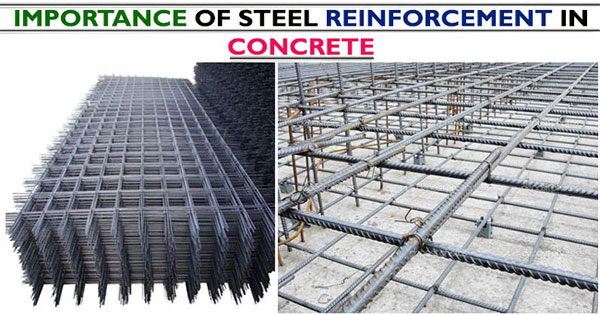Importance of Steel Reinforcement in Concrete

Reinforced concrete stands for a composite material that unites concrete and reinforcing bars implanted in concrete. The steel bars, wires and mesh are generally found in reinforcement but there are also other materials like carbon-filament reinforcement and steel fibres to be applied in special applications.
Concrete contains a high compressive strength but a poor tensile strength. But steel contains extreme high tensile strength along with a greater compressive strength. But steel is very much costly as compared to the concrete corresponding to its load-bearing strength. With the integration of steel and concrete into a composite material, it becomes possible to utilize both the high tensile strength of steel and the comparatively low-cost compressive strength of concrete.

For instance, the plasticity of concrete allows it to get molded quickly into various shapes, whereas it’s reasonably extreme fire resistance capacity makes it possible to safeguard the steel reinforcement implanted in it.
The purpose of the reinforced concrete designer is to unite the reinforcement with the concrete in a perfect way that the major parts of comparatively expensive reinforcement is combined to withstand the probable tensile and shear forces whereas applying the relatively economical concrete to combat the compressive forces.
To fulfill this purpose, it becomes necessary for the designer to find out the amount of reinforcement being applied, but how it should be allotted and where it should be placed. These decisions taken later will be vital for the successful execution of reinforced concrete and it is essential that, during construction, reinforcement should be arranged in exact location exactly as indicated by the designer.
So, it is crucial that both those who administer the setting up of reinforcement on the construction site, and those who set it, contain a basic appraisal of the principles of reinforced concrete together with the principles and practices of settling reinforcement.
Similar to reinforced concrete, pre-stressed concrete belongs to a composite material in which the weakness of concrete in tension is recompensed with the tensile strength of steel – in such a situation, steel wires, strands, or bars.
The compressive strength of the concrete is employed with use of an outside compressive force to it which either retains it permanently in compression even when loads are enforced to it throughout its working life (fully-prestressed) or restrains the value of any tensile stress that takes place under load (partial prestressing).
In reinforced concrete, the steel reinforcement bears all of the tensile stresses and, in some situations, even some of the compressive stresses. In prestressed concrete, the concrete is retained in compression with the use of the tendons.
In reinforced concrete, the steel is not intended to operate at a high level of stress since elongation of the steel will result in cracking of the concrete. In prestressed concrete, the steel mainly bears very high levels of tensile stress.

